Fractal Characterization of Non-Uniform Corrosion of Steel Bars in Concrete Beams after Accelerated depassivation and Seven-Year Natural Corrosion
Abstract
:1. Introduction
2. Experiment Program
2.1. Materials
2.2. Specimen Preparation and Experiment Procedure
2.3. Data Acquisition
3. Results and Discussion
3.1. Cross-Section Area Distribution
3.2. Fractal Analysis
3.2.1. Fractal Dimension Calculation
3.2.2. Influence of Loading Condition on Corrosion
3.2.3. Influence of Slag on Non-Uniformity of Corrosion
3.2.4. Relationship between Corrosion Rate and Fractal Dimension
4. Conclusions
- The non-uniformity of corrosion along a reinforcement bar can be expressed by the fractal dimension; the smaller the fractal dimension is, the higher the non-uniform corrosion degree will be.
- The load level has a slight influence on corrosion level and it has some influence on non-uniform corrosion along the reinforcement bar embedded in the ordinary reinforced concrete beam. A larger load level will result in a higher corrosion level for the CO group. Meanwhile, the incorporation of mineral powder helps to reduce the corrosion level and the non-uniformity of corrosion.
- The loading zone leads to different stress states, which induces non-uniform corrosion along the reinforcement bar. The average loss fraction of cross-sectional area and non-uniform corrosion degree in the pure bending tension zone are generally higher than that in the tension–shear zone.
- In this case, there is a positive proportion correlation between the average loss fraction of cross-sectional area and the non-uniformity of corrosion along the reinforcement bar.
Author Contributions
Funding
Conflicts of Interest
References
- Muthulingam, S.; Rao, B.N. Non-uniform corrosion states of rebar in concrete under chloride environment. Corros. Sci. 2015, 93, 267–282. [Google Scholar] [CrossRef]
- Qiao, D.; Nakamura, H.; Yamamoto, Y.; Miura, T. Crack patterns of concrete with a single rebar subjected to non-uniform and localized corrosion. Constr. Build. Mater. 2016, 116, 366–377. [Google Scholar] [CrossRef]
- Sutrisno, W.; Hartana, I.K.; Suprobo, P.; Wahyuni, E.; Iranata, D. Cracking process of reinforced concrete induced by non-uniform reinforcement corrosion. J. Teknol. 2017, 79. [Google Scholar] [CrossRef]
- Muthulingam, S.; Rao, B.N. Non-uniform time-to-corrosion initiation in steel reinforced concrete under chloride environment. Corros. Sci. 2014, 82, 304–315. [Google Scholar] [CrossRef]
- Wu, Q.; Yuan, Y. Experimental study on the deterioration of mechanical properties of corroded steel bars. China Civil Eng. J. 2008, 12, 42–47. [Google Scholar]
- An, L.; Ouyang, P.; Zheng, Y. Effect of stress concentration on mechanical properties of corroded reinforcing steel bars. J. Southeast Univ. Nat. Sci. Ed. 2005, 6, 940–944. [Google Scholar]
- González, J.A.; Andrade, C.; Alonso, C.; Feliu, S. Comparison of rates of general corrosion and maximum pitting penetration on concrete embedded steel reinforcement. Cem. Concr. Res. 1995, 25, 257–264. [Google Scholar] [CrossRef]
- Ye, H.; Jin, N.; Fu, C.; Jin, X. Rust distribution and corrosion-induced cracking patterns of corner-located rebar in concrete cover. Constr. Build. Mater. 2017, 156, 684–691. [Google Scholar] [CrossRef]
- Zhang, W.; Song, X.; Gu, X.; Li, S. Tensile and fatigue behavior of corroded rebars. Constr. Build. Mater. 2012, 34, 409–417. [Google Scholar] [CrossRef]
- Zhang, W.; Li, C.; Gu, X.; Dai, H. Stochastic model of constitutive relationship for corroded steel bars. J. Build. Mater. 2014, 5, 920–926. [Google Scholar]
- Zhang, R.; Castel, A.; François, R. The corrosion pattern of reinforcement and its influence on serviceability of reinforced concrete members in chloride environment. Cem. Concr. Res. 2009, 39, 1077–1086. [Google Scholar] [CrossRef]
- Jaffer, S.J.; Hansson, C.M. Chloride-induced corrosion products of steel in cracked-concrete subjected to different loading conditions. Cem. Concr. Res. 2009, 39, 116–125. [Google Scholar] [CrossRef]
- Jaffer, S.J.; Hansson, C.M. The influence of cracks on chloride-induced corrosion of steel in ordinary Portland cement and high performance concretes subjected to different loading conditions. Corros. Sci. 2008, 50, 3343–3355. [Google Scholar] [CrossRef]
- Yoon, S.; Wang, K.; Weiss, W.J.; Shah, S.P. Interaction between Loading, Corrosion, and Serviceability of Reinforced Concrete. Mater. J. 2000, 97, 637–644. [Google Scholar]
- Wang, X.; Du, X.; Yan, J.; Fang, Z. Experimental comparison of galvanostatic methods for accelerated corrosion of steel bars in RC members. J. Build. Mater. 2015, 1, 204–210. [Google Scholar]
- Stewart, M.G.; Al-Harthy, A. Pitting corrosion and structural reliability of corroding RC structures: Experimental data and probabilistic analysis. Reliab. Eng. Syst. Saf. 2008, 93, 373–382. [Google Scholar] [CrossRef]
- Zhou, B.; Gu, X.; Zhang, W.; Jin, X.; Huang, Q. Time-dependent reliability analysis of reinforced concrete beams subjected to bending and atmospheric environment. China Civil Eng. J. 2010, S2, 15–21. [Google Scholar]
- Zhu, H.; Ji, C. Fractal Theory and its Applications, 1st ed.; Science Press: Beijing, China, 2011; p. 12. [Google Scholar]
- Costa, J.M.; Sagués, F.; Vilarrasa, M. Fractal patterns from corrosion pitting. Corros. Sci. 1991, 32, 665–668. [Google Scholar] [CrossRef]
- Zhang, L.; Zhu, X.; Zhang, Z.; Zhang, J. Electrochemical noise characteristics in corrosion process of AZ91D magnesium alloy in neutral chloride solution. Trans. Nonferrous Met. Soc. China 2009, 19, 496–503. [Google Scholar] [CrossRef]
- Mahjani, M.G.; Moshrefi, R.; Sharifi-Viand, A.; Taherzad, A.; Jafarian, M.; Hasanlou, F.; Hosseini, M. Surface investigation by electrochemical methods and application of chaos theory and fractal geometry. Chaos Solitons Fractals 2016, 91, 598–603. [Google Scholar] [CrossRef]
- Zhou, B.; Wang, J.; Wang, H. Three-dimensional sphericity, roundness and fractal dimension of sand particles. Géotechnique 2017, 68, 18–30. [Google Scholar] [CrossRef]
- Xu, Y. Damage Characteristics of Materials for Concrete Structure and Their Constitutive Models; Qian, C. , Xu, Y., Eds.; Southeast University Press: Nanjing, China, 2015; pp. 363–448. [Google Scholar]
- Xu, Y.; Qian, C.; Bian, L.; Chen, Y. Fractal based characterization of non-uniform corroded surface profile in steel bars. J. Basic Sci. Eng. 2012, 2, 296–303. [Google Scholar]
- Standardization Administration of China. Technical Code for Application of Fly Ash Concrete; GB/T 50146-2014; Standardization Administration of China: Beijing, China, 2014.
- Fu, C.; Jin, N.; Ye, H.; Jin, X.; Dai, W. Corrosion characteristics of a 4-year naturally corroded reinforced concrete beam with load-induced transverse cracks. Corros. Sci. 2017, 117, 11–23. [Google Scholar] [CrossRef]
- Andisheh, K.; Scott, A.; Palermo, A.; Clucas, D. Influence of chloride corrosion on the effective mechanical properties of steel reinforcement. Struct. Infrastruct. Eng. 2019, 15, 1036–1048. [Google Scholar] [CrossRef]
- Alonso, C.; Andrade, C.; Castellote, M.; Castro, P. Chloride threshold values to depassivate reinforcing bars embedded in a standardized OPC mortar. Cem. Concr. Res. 2000, 30, 1047–1055. [Google Scholar] [CrossRef]
- Li, Y. Process and Modeling of Concrete Cover-Cracking Caused by Corner Located Rebar Corrosion. Master’s Thesis, Degree-Zhejiang University, Hangzhou, China, 2016. [Google Scholar]
- Lee, B.; Kim, G.; Nam, J.; Cho, B.; Hama, Y.; Kim, R. Compressive strength, resistance to chloride-ion penetration and freezing/thawing of slag-replaced concrete and cementless slag concrete containing desulfurization slag activator. Constr. Build. Mater. 2016, 128, 341–348. [Google Scholar] [CrossRef]
- Karahan, O. Transport properties of high volume fly ash or slag concrete exposed to high temperature. Constr. Build. Mater. 2017, 152, 898–906. [Google Scholar] [CrossRef]
- Dong, B.; Zhuang, Z.; Gu, Z.; Wu, Y.; Teng, X.; Xing, F.; Hong, S. Electrochemical impedance spectroscopy analysis of Cl- penetration in slag concrete. J. Shenzhen Univ. Sci. Eng. 2019, 36, 268–273. [Google Scholar]
- Ye, H.; Fu, C.; Jin, N.; Jin, X. Performance of reinforced concrete beams corroded under sustained service loads: A comparative study of two accelerated corrosion techniques. Constr. Build. Mater. 2018, 162, 286–297. [Google Scholar] [CrossRef]
- Lee, C.-K.; Ho, D.-S.; Yu, C.-C.; Wang, C.-C. Fractal analysis of temporal variation of air pollutant concentration by box counting. Environ. Model. Softw. 2003, 18, 243–251. [Google Scholar] [CrossRef]
- Liang, C.; Zhang, W. Fractal characteristic of pits distribution on 304 stainless steel corroded surface and its application in corrosion diagnosis. J. Wuhan Univ. Technol. 2007, 22, 389–393. [Google Scholar] [CrossRef]
- Lopes, R.; Betrouni, N. Fractal and multifractal analysis: A review. Med. Image Anal. 2009, 13, 634–649. [Google Scholar] [CrossRef] [PubMed]
- Dubuc, B.; Zucker, S.W.; Tricot, C.; Quiniou, J.F.; Wehbi, D.; Berry, M.V. Evaluating the fractal dimension of surfaces. Proc. R. Soc. Lond. Math. Phys. Sci. 1989, 425, 113–127. [Google Scholar] [CrossRef]
- Secrieru, C.; Nianga, J.-M.; Iost, A. Some Remarks Concerning the Application of the Variation Method in the Study of Fractal Curves. In Topics on Chaotic Systems; World Scientific: Singapore, 2009; pp. 294–298. [Google Scholar]
- Raghavendra, B.S.; Dutt, D.N. Signal characterization using fractal dimension. Fractals 2010, 18, 287–292. [Google Scholar] [CrossRef]
- Weng, Y.; Li, X. Corrosion Prediction and Basic Chemometrics from Experiments to Data Analysis, Modeling and Prediction, 1st ed.; Petroleum industry press: Beijing, China, 2011; pp. 171–177. [Google Scholar]
- Phinyomark, A.; Phukpattaranont, P.; Limsakul, C. Applications of variance fractal dimension: A survey. Fractals 2014, 22, 1450003. [Google Scholar] [CrossRef]
- Delagrave, A.; Bigas, J.P.; Ollivier, J.P.; Marchand, J.; Pigeon, M. Influence of the interfacial zone on the chloride diffusivity of mortars. Adv. Cem. Based Mater. 1997, 5, 86–92. [Google Scholar] [CrossRef]



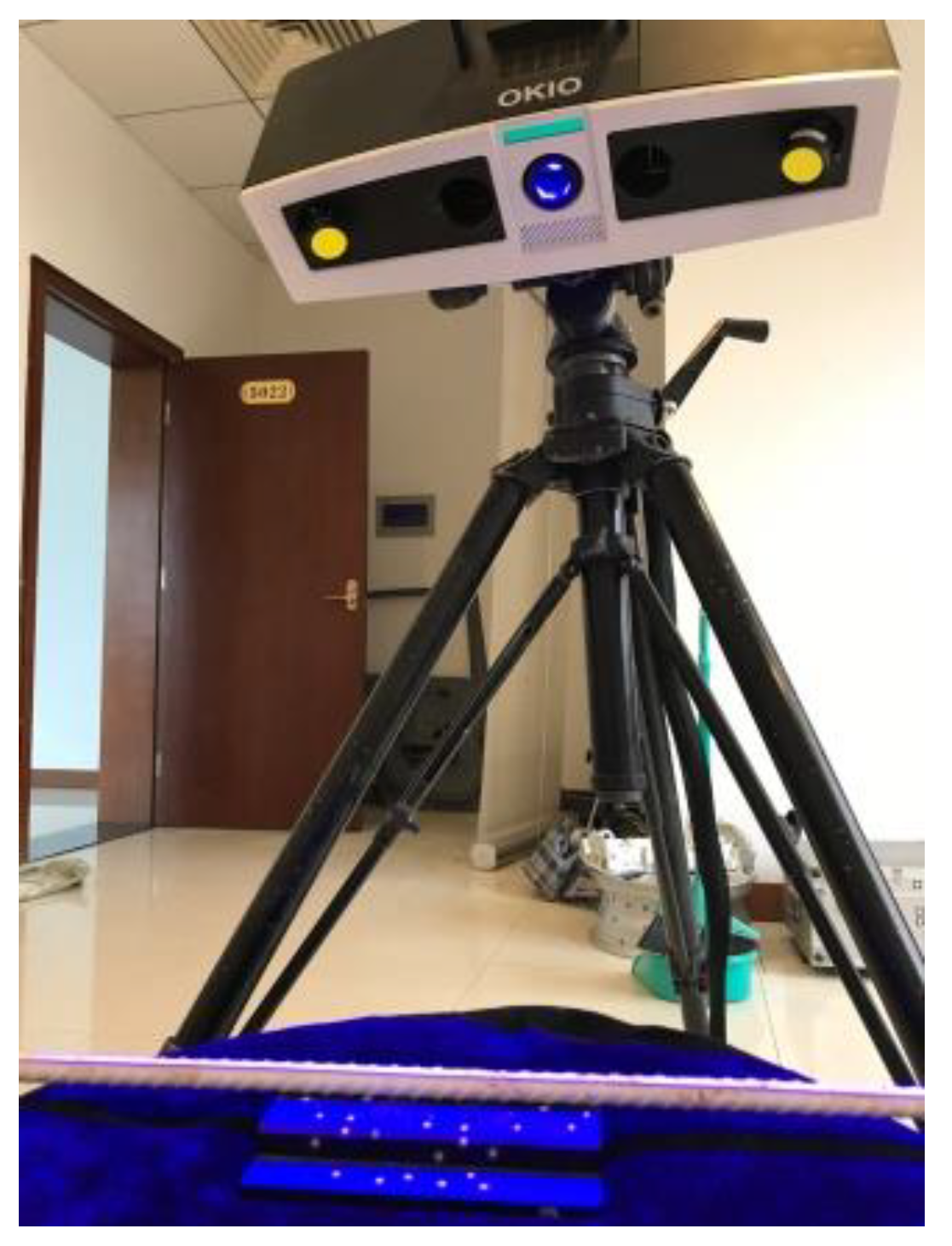
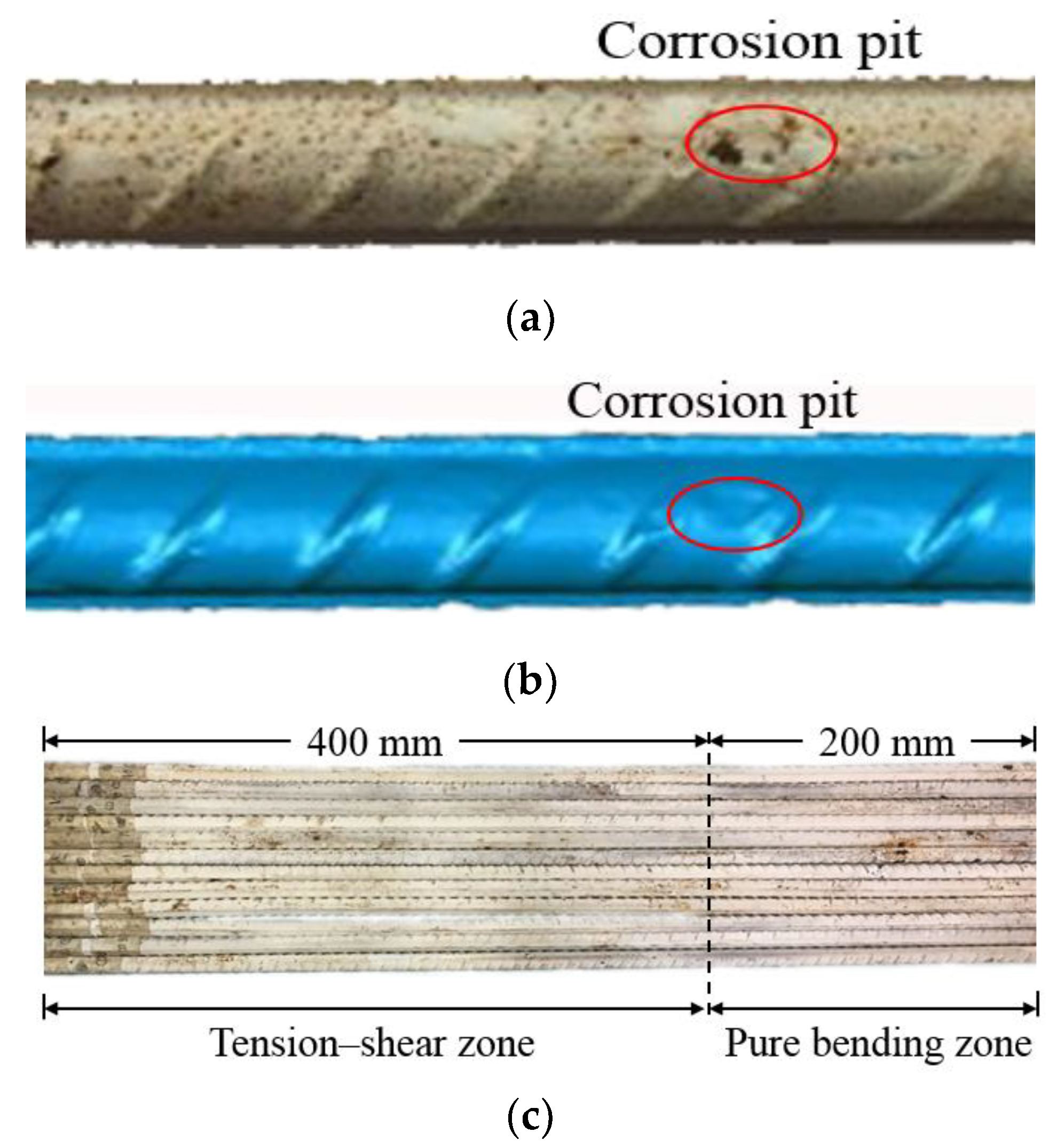

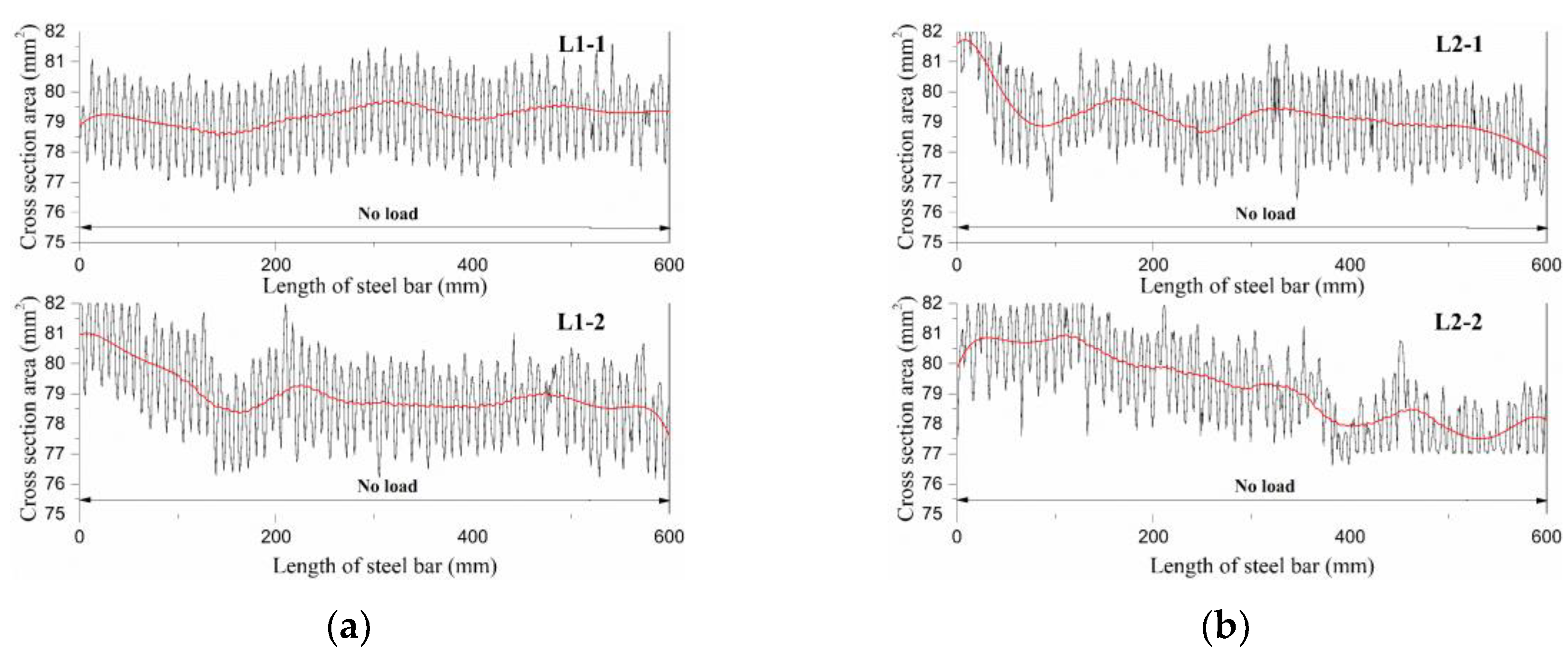

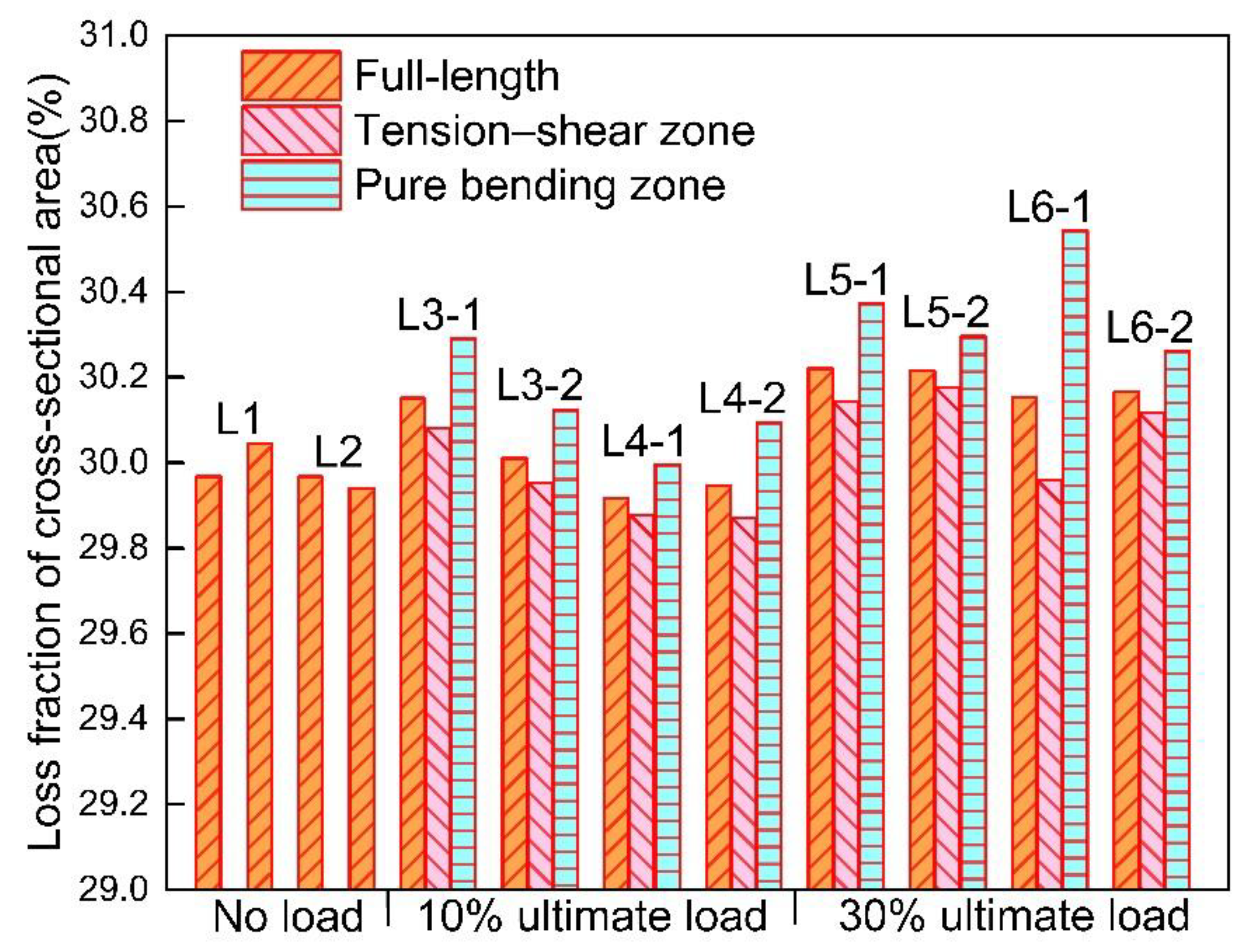

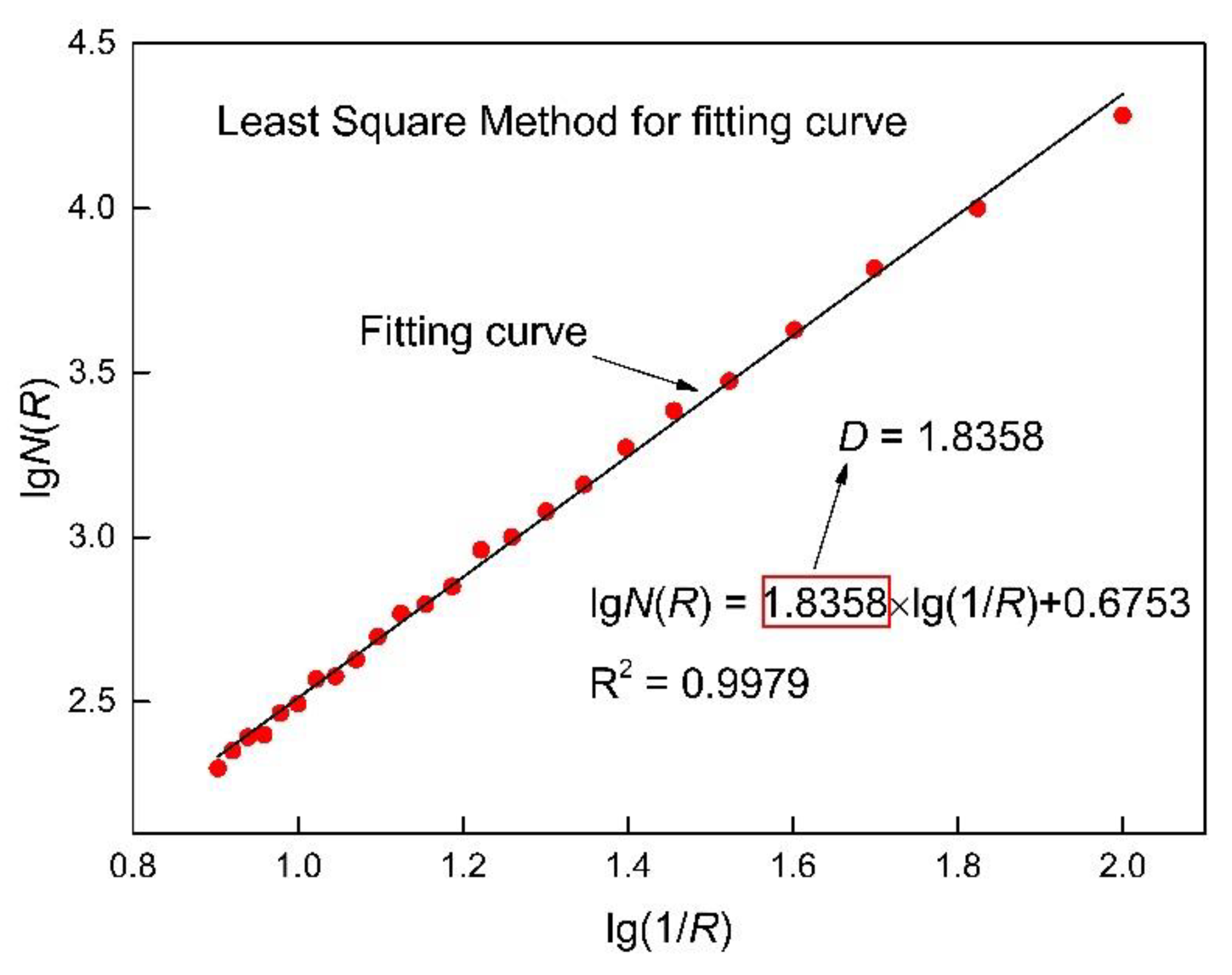

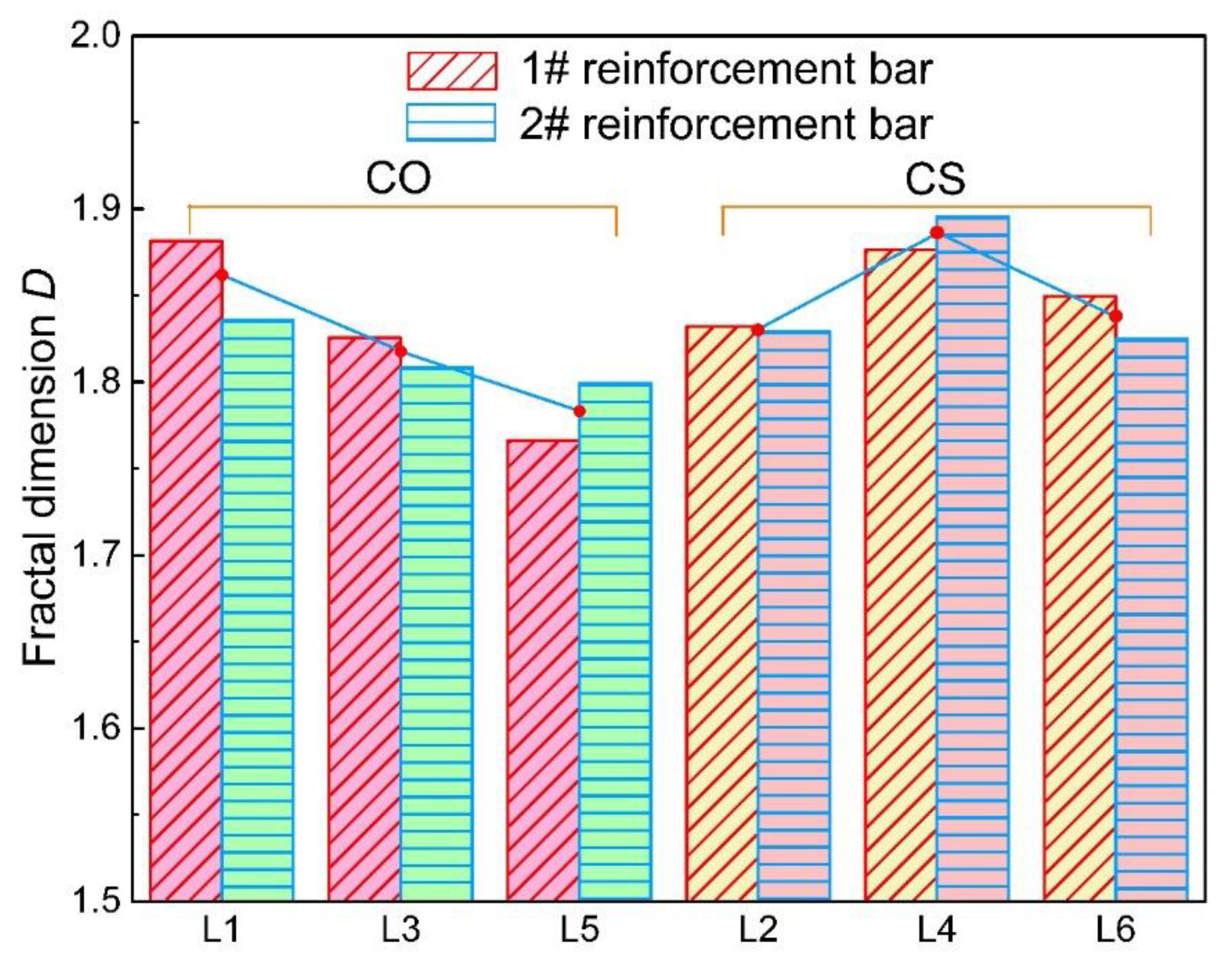
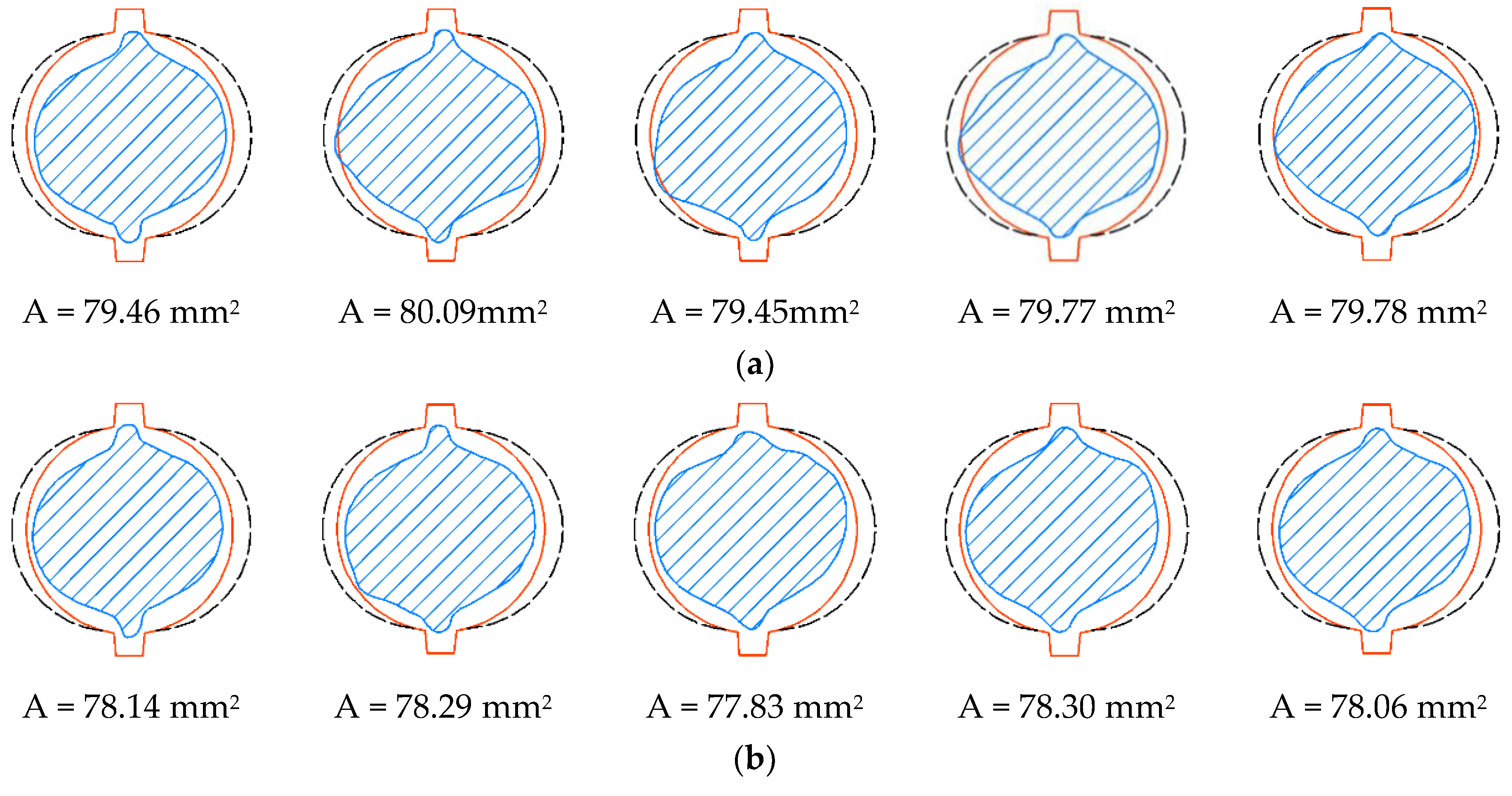
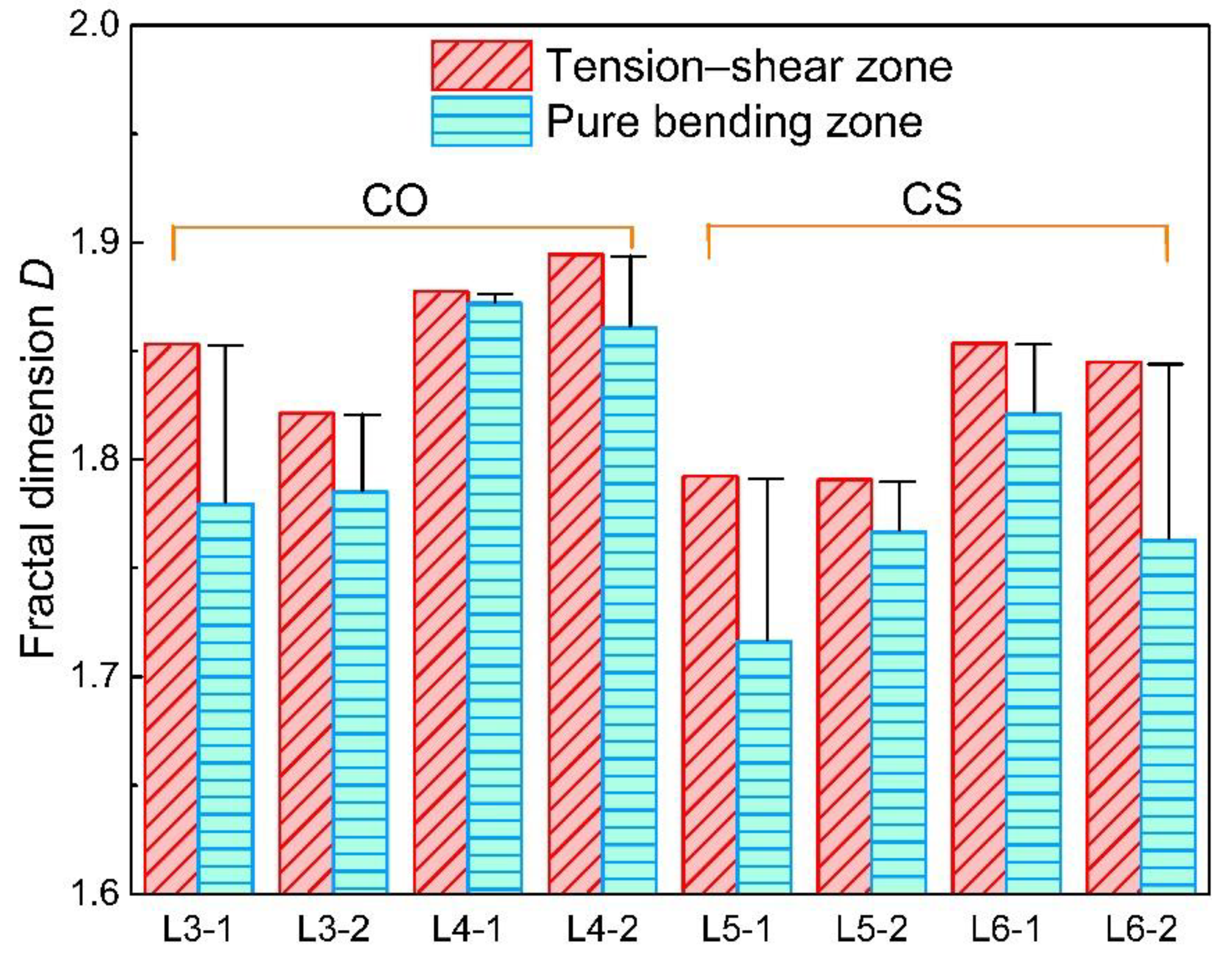
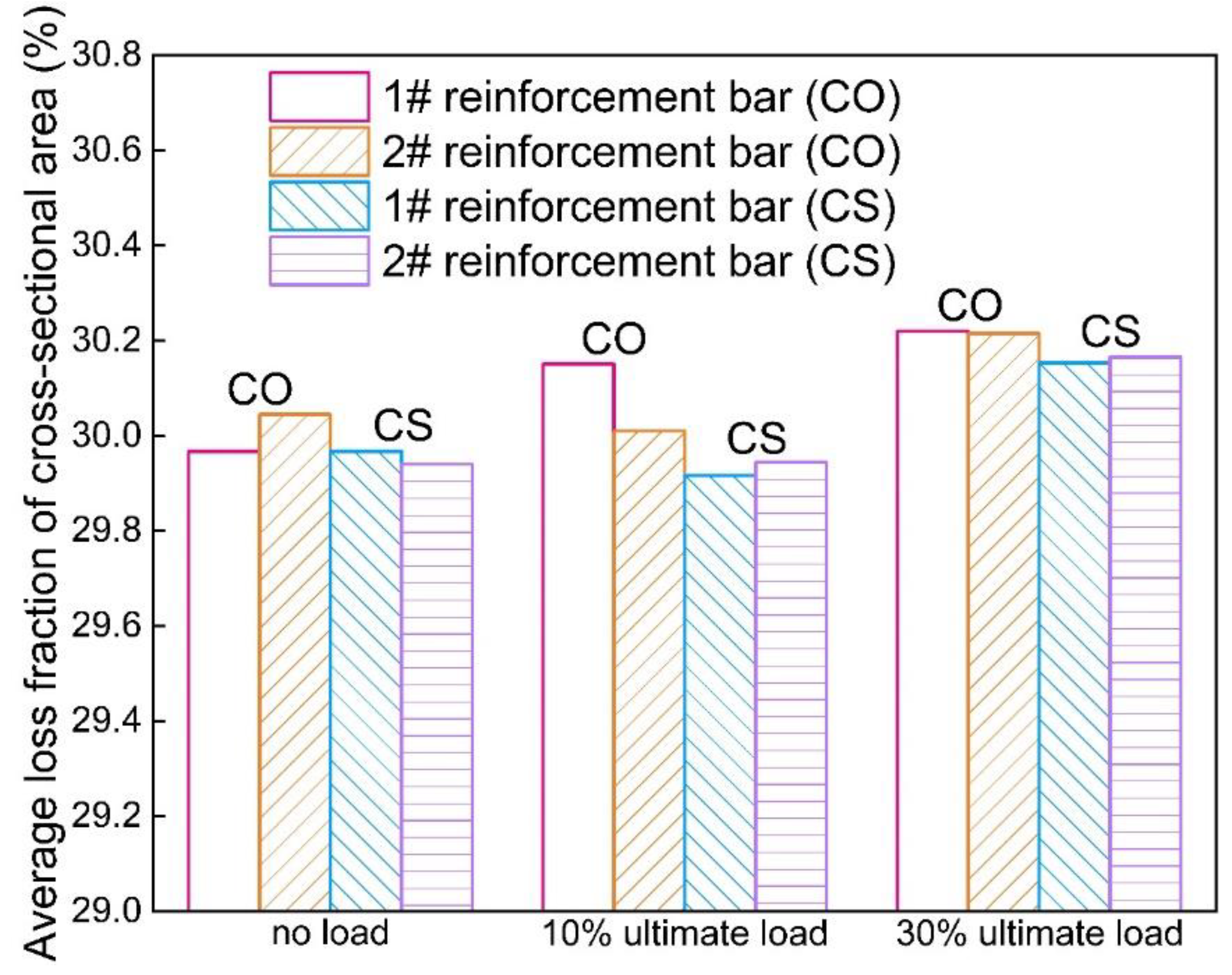
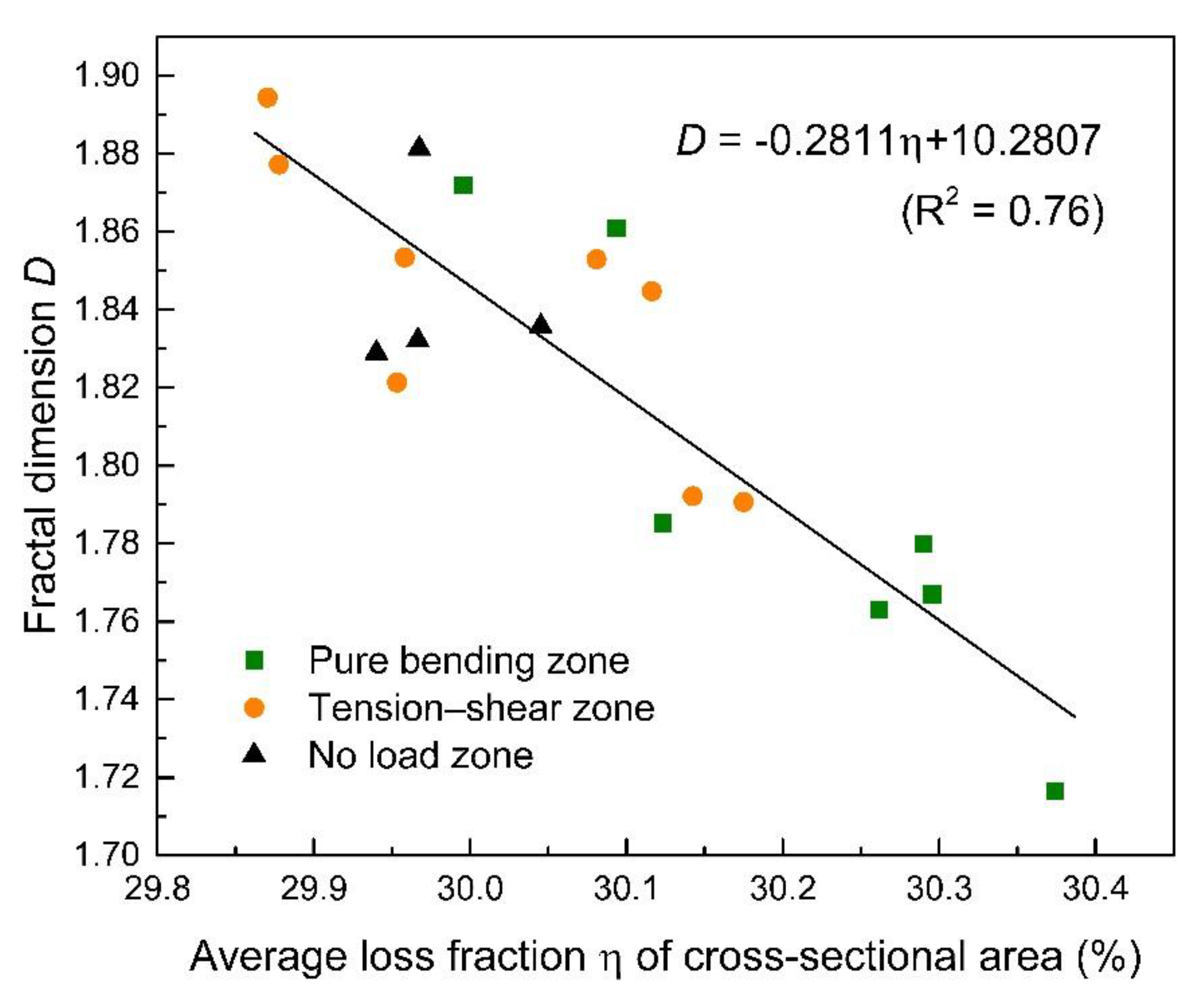
| Mineral Composition | C3S | C2S | C3A | C4AF | Gypsum |
|---|---|---|---|---|---|
| Content | 55.5 | 19.1 | 6.5 | 10.1 | 5.0 |
| Composition | C | Si | Mn | P | S | Ceq 1 |
|---|---|---|---|---|---|---|
| HRB335 | 0.25 | 0.80 | 1.60 | 0.045 | 0.045 | 0.52 |
| HPB235 | 0.22 | 0.30 | 0.65 | - | - | - |
| ID | Water-to-Binder Ratio | Cement | Slag | Water | Fine Aggregate | Coarse Aggregate | Compressive Strength (MPa) |
|---|---|---|---|---|---|---|---|
| CO | 0.53 | 370 | 0 | 188 | 750 | 1112 | 50.6 |
| CS | 0.53 | 185 | 185 | 188 | 750 | 1112 | 45.9 |
| Concrete Type | CO | CS | CO | CS | CO | CS |
|---|---|---|---|---|---|---|
| Proportion of ultimate load Specimen label | 0 | 0 | 10% | 10% | 30% | 30% |
| L1-1 | L2-1 | L3-1 | L4-1 | L5-1 | L6-1 | |
| L1-2 | L2-2 | L3-2 | L4-2 | L5-2 | L6-2 |
| Specimen Label | L1-1 | L1-2 | L3-1 | L3-2 | L5-1 | L5-2 |
| Minimum area for 0 to 400 mm | 76.6446 | 76.4769 | 76.5054 | 76.0669 | 76.5907 | 74.9835 |
| Average area for 0 to 400 mm | 79.1380 | 79.8435 | 79.0787 | 79.2229 | 79.0090 | 78.9721 |
| Minimum area for 400 to 600 mm | 77.0756 | 76.2574 | 76.4212 | 75.5797 | 76.0123 | 76.2791 |
| Average area for 400 to 600 mm | 79.3444 | 77.6694 | 78.8420 | 79.0306 | 78.7470 | 78.8357 |
| Specimen Label | L2-1 | L2-2 | L4-1 | L4-2 | L6-1 | L6-2 |
| Minimum area for 0 to 400 mm | 76.3492 | 76.6179 | 76.5348 | 76.8448 | 76.1551 | 76.7400 |
| Average area for 0 to 400 mm | 79.4435 | 79.8534 | 79.3082 | 79.3085 | 79.2173 | 79.0386 |
| Minimum area for 400 to 600 mm | 76.3812 | 76.9876 | 76.2062 | 76.6481 | 75.9862 | 76.3994 |
| Average area for 400 to 600 mm | 78.7362 | 78.0063 | 79.1747 | 79.0640 | 78.5557 | 78.8741 |
© 2019 by the authors. Licensee MDPI, Basel, Switzerland. This article is an open access article distributed under the terms and conditions of the Creative Commons Attribution (CC BY) license (http://creativecommons.org/licenses/by/4.0/).
Share and Cite
Jiang, H.; Jin, N.; Ye, H.; Tian, Y.; Jin, X.; Zeng, Q.; Yan, D.; Xu, X. Fractal Characterization of Non-Uniform Corrosion of Steel Bars in Concrete Beams after Accelerated depassivation and Seven-Year Natural Corrosion. Materials 2019, 12, 3919. https://doi.org/10.3390/ma12233919
Jiang H, Jin N, Ye H, Tian Y, Jin X, Zeng Q, Yan D, Xu X. Fractal Characterization of Non-Uniform Corrosion of Steel Bars in Concrete Beams after Accelerated depassivation and Seven-Year Natural Corrosion. Materials. 2019; 12(23):3919. https://doi.org/10.3390/ma12233919
Chicago/Turabian StyleJiang, Haoyu, Nanguo Jin, Hailong Ye, Ye Tian, Xianyu Jin, Qiang Zeng, Dongming Yan, and Xin Xu. 2019. "Fractal Characterization of Non-Uniform Corrosion of Steel Bars in Concrete Beams after Accelerated depassivation and Seven-Year Natural Corrosion" Materials 12, no. 23: 3919. https://doi.org/10.3390/ma12233919








